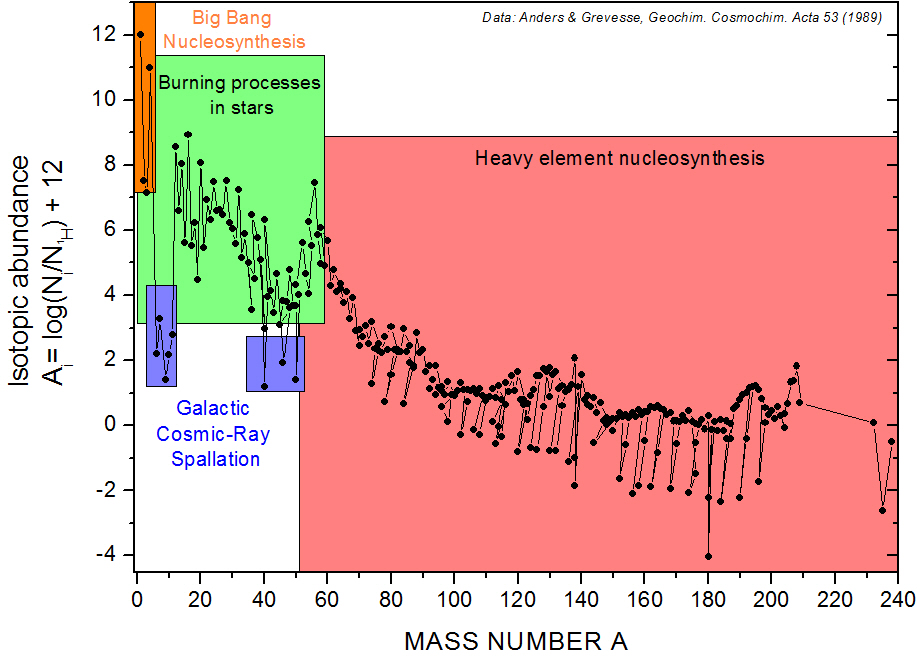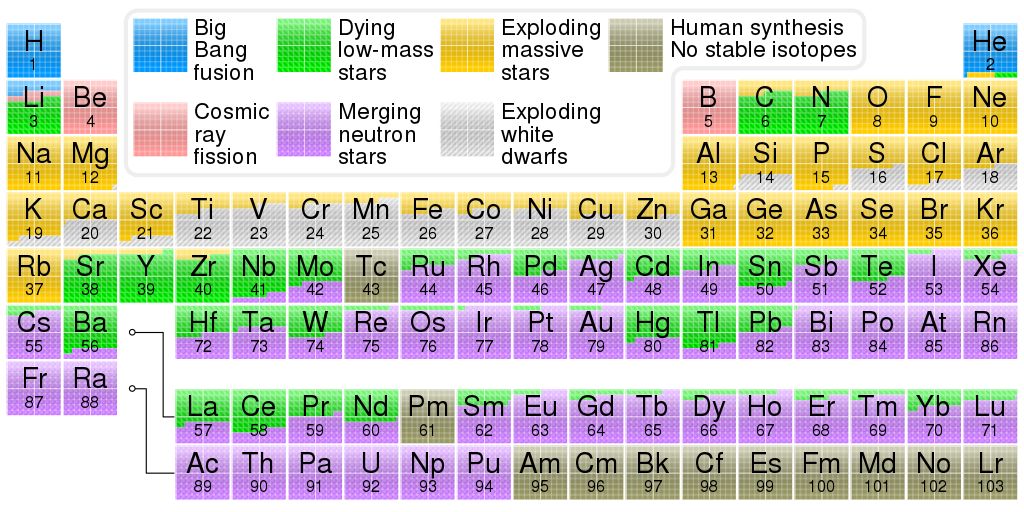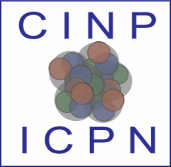Nuclear Astrophysics
Welcome to the Nuclear Astrophysics Scientific Working Group!
This working group provides a forum for all Canadian scientists working in nuclear astrophysics research and facilitates communication and collaboration within the community by organizing workshops and topical sessions at conferences and fosters the interaction with closely related communities. The recent achievements and activities as well as the future perspectives of this community are described in detail in the CINP Brief to the Subatomic Physics Long Range Plan.
For more information, please contact us.
What is Nuclear Astrophysics doing?
“The nitrogen in our DNA, the calcium in our teeth, the iron in our blood, the carbon in our apple pies were made in the interiors of collapsing stars. We are made of starstuff.”
― Cosmos
Astrophysics is a multi-faceted research field that has strong overlap with Nuclear Structure and Astronomy. A "Nuclear" Astrophysicist is specifically interested in a complete understanding of the astrophysical origins and the production processes that make up all the visible matter around us. This quest is strongly connected to the theoretical understanding of the quantum many-body problem of the atomic nucleus that would enable a reliably prediction of the properties of all nuclei from the proton- to the neutron-dripline.
The interpretation of the observed solar abundances (see Fig.1), from hydrogen up to uranium, is a long-standing problem. The lightest elements, hydrogen, helium and a bit of lithium, have been created in the early universe 13.8 billion years ago during the Big Bang. Every heavier element has been produced by reactions in the in interior of stars or during stellar events, in so-called "Cauldrons in the Cosmos". (Not to be mistaken with Dr. Strange's "Cauldron of the Cosmos" in the Marvel Universe...).

The basic foundation was already laid in 1957 by Canadian astrophysicist Al Cameron (A.G.W. Cameron, Publ. Astron. Soc. of the Pac. 69, 201 (1957)) and Burbidge, Burbidge, Fowler, and Hoyle (E.M. Burbidge et al., Revs. Mod. Phys. 29, 547 (1957)). Since then, generations of stellar modellers have worked hand in hand with experimental nuclear astrophysicists and theoretical nuclear physicists to better understand the underlying astrophysical processes and to finetune and constrain the astrophysical and nuclear physics inputs.

How well do we understand the different nucleosynthesis processes nowadays? Despite the tremendous efforts in the past six decades, experimental nuclear astrophysics has just scratched at the surface of its possibilities. So far only half of the total number of nuclei that are expected to exist between the neutron- and proton-dripline have been discovered, about 3450 nuclei. Another ~4000 nuclei are awaiting discovery, the vast majority of them are on the neutron-rich side.
However, not all of these nuclei and their nuclear properties need to be investigated to improve our understanding of the creation of elements. So-called ''sensitivity studies" have helped to identify the most important nuclear properties and regions of nuclei that need to be measured to better understand the creation of nuclei in stars and astrophysical events. Such efforts are important to guide the future experimental program where competition for beamtime will be large.
With the detection techniques established and refined at the present facilities, the community is looking forward to an exciting future with several of the next generation of radioactive ion beam (RIB) facilities becoming operational in the next decade.
Which topics does Nuclear Astrophysics Research in Canada cover?
The Canadian community is focusing their efforts on main aspects around the Big Question "What is the role of radioactive nuclei in shaping the visible matter in the universe?". There is also a very lively experimental program around astrophysical reaction studies of stable nuclei but the focus in the upcoming decades will be to fully exploit the new possibilities with radioactive beams, at Canadian facilities like ISAC and ARIEL at TRIUMF, as well as internationally at major RIB facilities and at smaller accelerators.
The detection of the gravitational wave signal GW170817 from a binary neutron star merger by the LIGO-Virgo Collaboration on August 17th, 2017 has led to a worldwide boost in public awareness for the creation of elements and how radioactive beam facilities and stellar modellers help to understand these complex topics better since we are all "made of stardust".
Canadian scientists are already deeply involved in this ''multi-messenger" astrophysics since many years and have taken leadership roles thanks to the diverse nuclear (astro)physics research that is enabled by the ISAC facility at TRIUMF. Still, the next decade will be the most exciting since developments on the experimental frontier (new facilities, like ARIEL, FRIB, FAIR) and on the theoretical frontier (new models and descriptions) will allow unprecedented progress in nuclear astrophysics.
